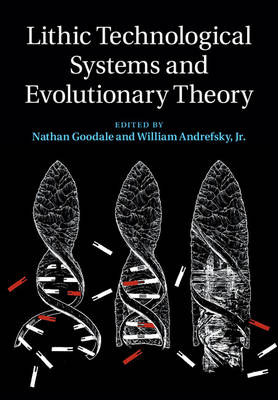
Lithic Technological Systems and Evolutionary Theory
Cambridge University Press (Verlag)
978-1-107-02646-9 (ISBN)
Stone tool analysis relies on a strong background in analytical and methodological techniques. However, lithic technological analysis has not been well integrated with a theoretically informed approach to understanding how humans procured, made, and used stone tools. Evolutionary theory has great potential to fill this gap. This collection of essays brings together several different evolutionary perspectives to demonstrate how lithic technological systems are a by-product of human behavior. The essays cover a range of topics, including human behavioral ecology, cultural transmission, phylogenetic analysis, risk management, macroevolution, dual inheritance theory, cladistics, central place foraging, costly signaling, selection, drift, and various applications of evolutionary ecology.
Nathan Goodale is Assistant Professor of Anthropology at Hamilton College. He is author of articles and book chapters dealing with lithic technology and evolutionary theory in several journals and edited volumes, including Evolution: Education and Outreach, American Antiquity, the Journal of Archaeological Science, Complex Hunter-Gatherers (2004), and Lithic Technology (Cambridge, 2008). William Andrefsky, Jr, is Edward R. Meyer Distinguished Professor of Anthropology and Dean of the Graduate School at Washington State University. He is author of several books dealing with stone analysis, including Lithics (Cambridge, 1998 and 2004), Lithic Debitage (2001), and Lithic Technology (Cambridge, 2008).
Part I. Lithic Technological Systems and Evolutionary Theory: 1. Interpreting lithic technology under the evolutionary tent William Andrefsky, Jr and Nathan Goodale; Part II. Culture History and Phylogenetic Evolution: 2. Graphing evolutionary pattern in stone tools to reveal evolutionary process R. Lee Lyman; 3. Theory in archaeology: morphometric approaches to the study of fluted points Michael Shott; 4. Innovation and natural selection in Paleoindian projectile points from the American Southwest Todd L. VanPool, Michael J. O'Brien and R. Lee Lyman; Part III. Applications of Behavioral Ecology to Lithic Studies: 5. A case of extinction in Paleoindian archaeology Charlotte Beck and George T. Jones; 6. The North China Nanolithic Robert L. Bettinger, Christopher Morgan and Loukas Barton; 7. When to retouch, haft, or discard? Modeling optimal use/maintenance schedules in lithic tool use Chris Clarkson, Michael Haslam and Clair Harris; 8. Procurement costs and tool performance requirements: determining constraints on lithic toolstone selection in Baja California Sur Jennifer Ferris; 9. A model of lithic raw material procurement Raven Garvey; 10. Artifacts as patches: the marginal value theorem and stone tool life histories Steven L. Kuhn and D. Shane Miller; 11. Signals in stone: exploring the role of social information exchange, conspicuous consumption, and costly signaling theory in lithic analysis Colin P. Quinn; Part IV. Cultural Transmission and Morphology: 12. An analysis of stylistic variability of stemmed obsidian tools (mata'a) on Rapa Nui (Easter Island) Carl P. Lipo, Terry L. Hunt and Brooke Hundtoft; 13. Cultural transmission and the production of material goods: evolutionary pattern through measuring morphology Nathan Goodale, William Andrefsky, Jr, Curtis Osterhoudt, Lara Cueni and Ian Kuijt; 14. What Steward got right: technology, work organization, and cultural evolution Nathan E. Stevens; 15. Evolution of the slate tool industry at Bridge River, British Columbia Anna M. Prentiss, Nathan Goodale, Lucille E. Harris and Nicole Crossland.
| Erscheint lt. Verlag | 22.1.2015 |
|---|---|
| Zusatzinfo | 2 Tables, unspecified; 15 Maps; 16 Halftones, unspecified; 81 Line drawings, unspecified |
| Verlagsort | Cambridge |
| Sprache | englisch |
| Maße | 178 x 254 mm |
| Gewicht | 700 g |
| Themenwelt | Geisteswissenschaften ► Archäologie |
| Geschichte ► Allgemeine Geschichte ► Vor- und Frühgeschichte | |
| Naturwissenschaften ► Biologie ► Evolution | |
| ISBN-10 | 1-107-02646-6 / 1107026466 |
| ISBN-13 | 978-1-107-02646-9 / 9781107026469 |
| Zustand | Neuware |
| Haben Sie eine Frage zum Produkt? |
aus dem Bereich


